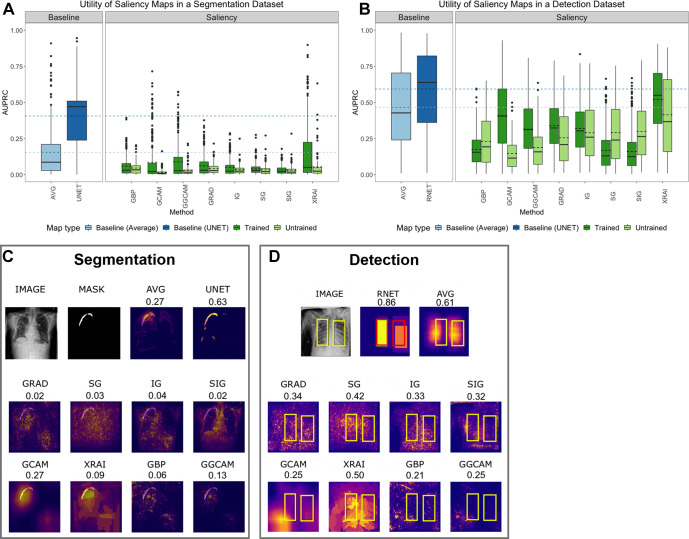Figure 2:
(A) Test set segmentation AUPRC scores for SIIM-ACR Pneumothorax Segmentation dataset and (B) test set bounding box detection AUPRC scores for RSNA Pneumonia Detection Challenge dataset. Each box plot represents the distribution of scores across the test datasets for each saliency map, with a solid line denoting the median and a dashed line denoting the mean. Results are compared with a low baseline using the average segmentation or bounding box of the training and validation sets (light blue) and high baseline using U-Net or RetinaNet (dark blue). (C) Example saliency maps on SIIM-ACR pneumothorax dataset with corresponding AUPRC scores and (D) on RSNA pneumonia dataset with corresponding utility scores. “AVG” refers to using the average of all ground-truth masks (for pneumothorax) or bounding boxes (for pneumonia) across the training and validation datasets; “UNET” refers to using the U-Net trained on a segmentation task for localization of pneumothorax; “RNET” refers to using RetinaNet to generate bounding boxes for localizing pneumonia with bounding boxes. ACR = American College of Radiology, AUPRC = area under the precision-recall curve, GBP = guided backpropagation, GCAM = gradient-weighted class activation mapping, GGCAM = guided GCAM, GRAD = gradient explanation, IG = integrated gradients, RSNA = Radiological Society of North America, SG = Smoothgrad, SIG = smooth IG, SIIM = Society for Imaging Informatics in Medicine.

